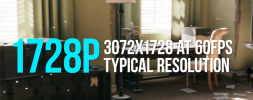Everything you say is true and pretty much sums up everybody thoughts on current state of things. But let me play devils advocate for a second perhaps High five rush had something to do with this? Perhaps they were focused on this title which resulted in worse quality of Ghost Wire.Yea, it's pretty bad optics. As they said in the video there, they've had a year since the game launched on PS5 and PC to improve things and they should have capitalized on this new release to fix longstanding issues with the game, and hell, throw their loyal console gamers a bone and maybe give them something exclusive to stand out from the others.
But no.. this just continues the narrative that Xbox doesn't manage studios properly, and that their hardware is continuing to underperform relative to their competitor.. and that they don't think enough of their core fanbase to do something special for them.
They should be firing on all cylinders by now in the gen.. and yet it still looks like nothing is changing. They really need some wins right now.. because honestly looking at my twitter, their hardcore fanbase is starting to ask hard questions.. and that's not good.
But you are right in general I have thoughts about selling my XSX and buying pc parts instead. Things are bad, I have my XSX for almost 3 years now and the only thing that keeps me using it is GP.
If I wouldn’t have to upgrade my whole PC I would be selling XSX right now.

